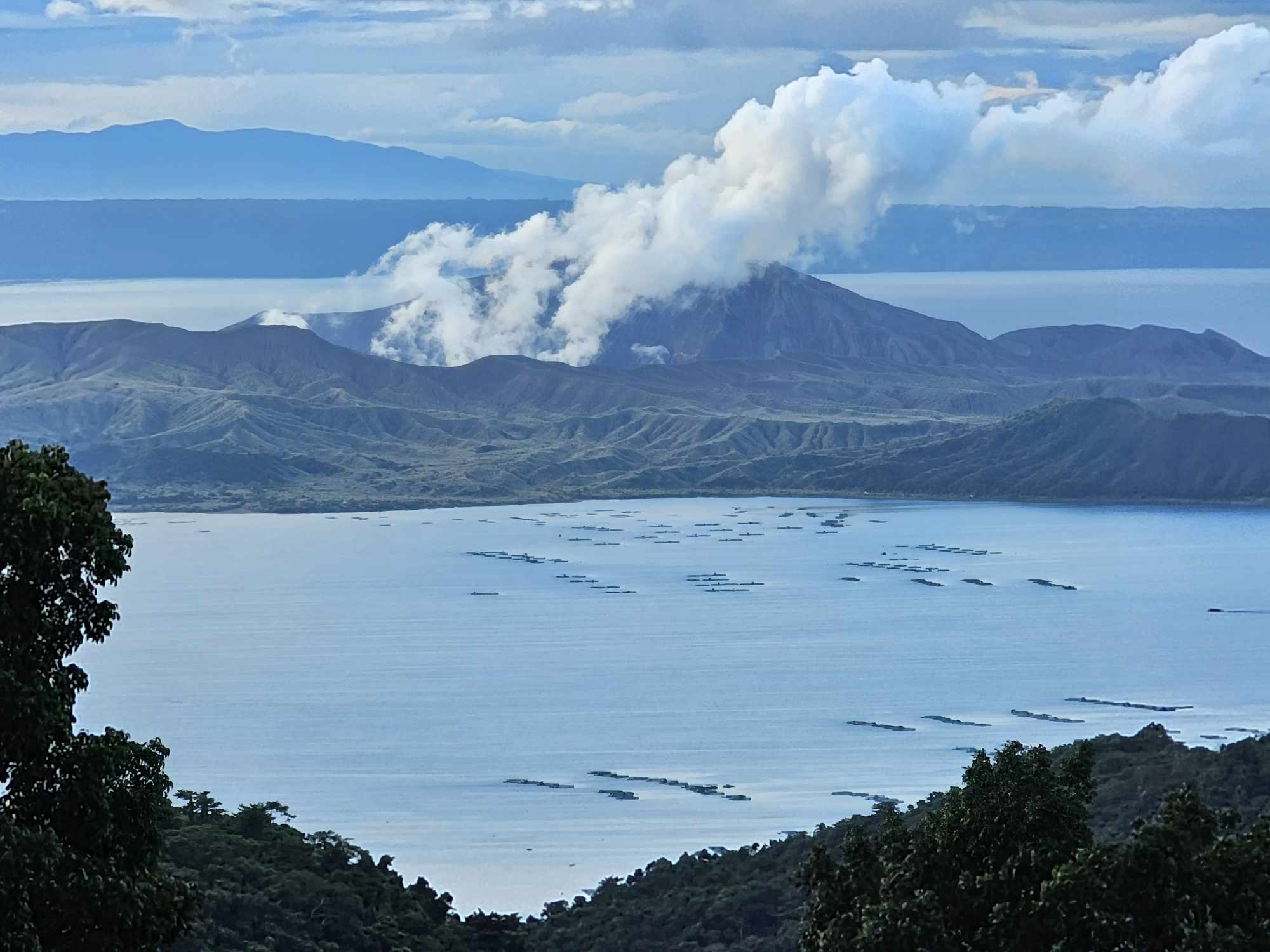
FILE PHOTO: The scenic view of Taal Volcano from Tagaytay City, Cavite, shown in this photo taken on October 24, 2023. This photo portrays calmness amid the volcano’s continued emission of toxic gas. —MARLON MALLARI/ CONTRIBUTOR
LUCENA CITY — The emission of harmful sulfur dioxide (SO2) from Taal Volcano in Batangas province has subsided, the Philippine Institute of Volcanology and Seismology (Phivolcs) reported on Tuesday, July 2.
Only 2,116 metric tons of SO2 from the volcano’s main crater was measured over the past 24 hours. This rose to 900 meters above Taal Volcano Island, the volcano’s crater landmass locally known as “Pulo” that sits within Taal Lake, before drifting to a west-southwest direction, the Phivolcs report said.
The emission level dropped from 6,571 MT of toxic gas logged from June 28 to 30.
The state volcanologist said no volcanic earthquake was recorded during the monitoring period.
On Saturday, June 29, two phreatic events occurred briefly at Taal Volcano.
The state volcanologists said in its advisory that the “weak phreatic activity is likely driven by the continued emission of hot volcanic gases at the Taal Main Crater and could be succeeded by similar events.”
“The background levels of volcanic earthquake activity and ground deformation detected at Taal indicate that unrest is unlikely to progress into a magmatic eruption,” it added.
Taal Volcano erupted in January 2020, more than four decades after its previous eruption, sending hundreds of thousands fleeing from within the 14-kilometer radius of the volcano.
Taal Volcano remains under alert level 1 (low level of volcanic unrest), which means that phreatic eruptions, volcanic earthquakes, thin ash fall, and hazardous gas emissions may occur, Phivolcs said.
The agency reminded the public that Taal Volcano continued to display an “abnormal condition” and “should not be interpreted to have ceased unrest nor ceased the threat of eruptive activity.”